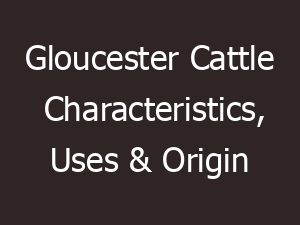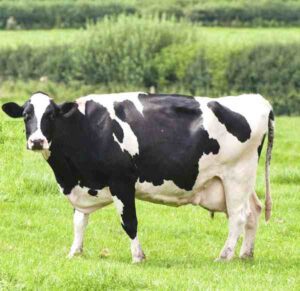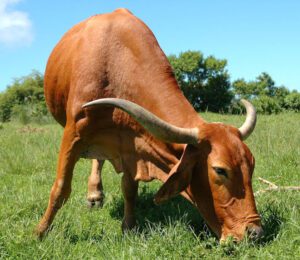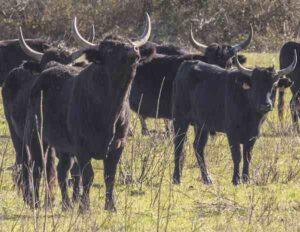The Randall cattle are one of the most endangered breeds of cattle in the United States. Exact origin of the breed are not clear, but it is likely to have originated in Sunderland, Vermont.
It is a purebred cattle that developed from a combination of Dutch, English and French cattle breeds. The breed was developed on the farm of Samuel Randall, and later his son, Everett Randall.
The Randall family kept a closed herd of Randall cattle for over 80 years. A few Randall cattle were rescued from the Randall farm after Everett Randall had died in 1985.
The animals were widely dispersed but soon began to disappear. But for preserving the genetics from extinction, Cynthia Creech (then living in Tennessee) stepped in to purchase most of the remaining animals.
The breed was called by various names during the following years, but it was decided that they would be called Randall cattle in the 1990s.
And in 2001 the Registry was set up with that name. Historically, these animals were multi-purpose animals and were used for various purposes. They have historically been used as a dairy breed, although they also possess meat and draft qualities.
Today, the breed is very rare and designated as ‘critical’ by the American Livestock Breeds Conservancy‘. That means that there are less than 200 animals registered with the breed association each year. From fewer than 20 animals the breed population has increased to over 250 breeding females.
Currently most of the Randall cattle are found in the Eastern United States and Canada (with the largest concentration in the Northeast). The largest Randall herd, and the breed Registry, are located in South Kent, Connecticut. Read some more information about the Randall cattle bellow.
Randall Cattle Characteristics
The Randall cattle are quite variable in size and conformation, but they are commonly medium sized animals. They have a constitution that is suited to the New England climate.
They have a “color-sided’ lineback pattern, black markings on a white base, varying from almost white to very dark. Other subtle shades have been observed such as blue, gray and mahogany and now there are a number of recessive reds. The roan coloring on their sides varies from almost black to nearly white color.
The Randall cattle have black noses, ears, eye rings, feet and teats. Between the extremes are many animals that are blue roan or speckled.
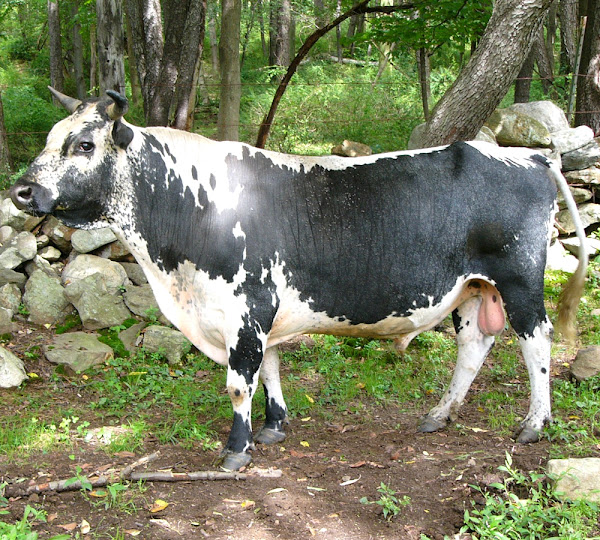
All these variants are beautiful and stunning, especially on a background of green grass. The bulls are larger than the cows and demonstrate good growth rates.
Majority of the cows have dairy conformation and well developed udders. Average live body weight of the cows is between 272 and 500 kg. And the bulls on average weight about 450 to 816 kg. Photo and info from Wikipedia.
Uses
The Randall cattle have historically been used as a dairy cattle breed. But they also possess meat and draft qualities.
Special Notes
Randall cattle are assertive and docile in temperament. They are multi-purpose animals and used for many purposes. Their meat characteristics can vary between different family lines.
For example, some animals produce a lean carcase with yellow fat and others produce a beefier well marbled carcass. Metabolic disorders have not been seen, and calving difficulties are rare in Randall cattle.
The breed become very docile and tame when handled regularly. They have high intelligence and strong maternal and survival instincts. They are pretty hardy and uniquely adapted to extensive or low input farming systems.
Historically, subsistence farms, small scale forage-based farms and homesteads were the most suitable and natural environment for the Randall cattle.
Today, the breed is critically rare and they are being closely managed for increasing numbers and maintaining genetic health. Review full breed profile of this breed in the following table.
| Breed Name | Randall |
| Other Name | None |
| Breed Purpose | Milk, meat, draft |
| Special Notes | Assertive, docile |
| Breed Size | Medium |
| Bulls | About 450 to 816 kg |
| Cows | About 272 to 500 kg |
| Climate Tolerance | All Climates |
| Coat Color | Usually Randall cattle have a “color-sided’ lineback pattern, black markings on a white base, varying from almost white to very dark. |
| Horned | Yes |
| Milk Yield | Good |
| Rarity | Rare |
| Country/Place of Origin | United States |


